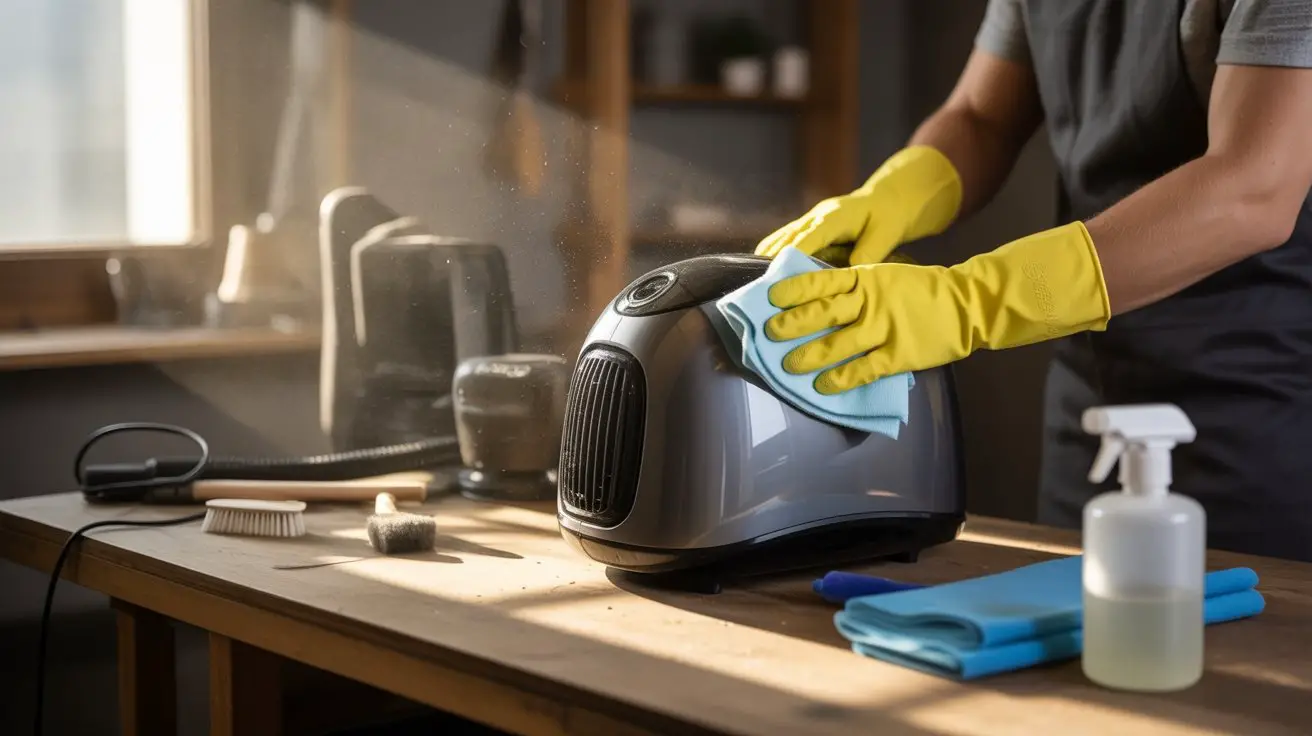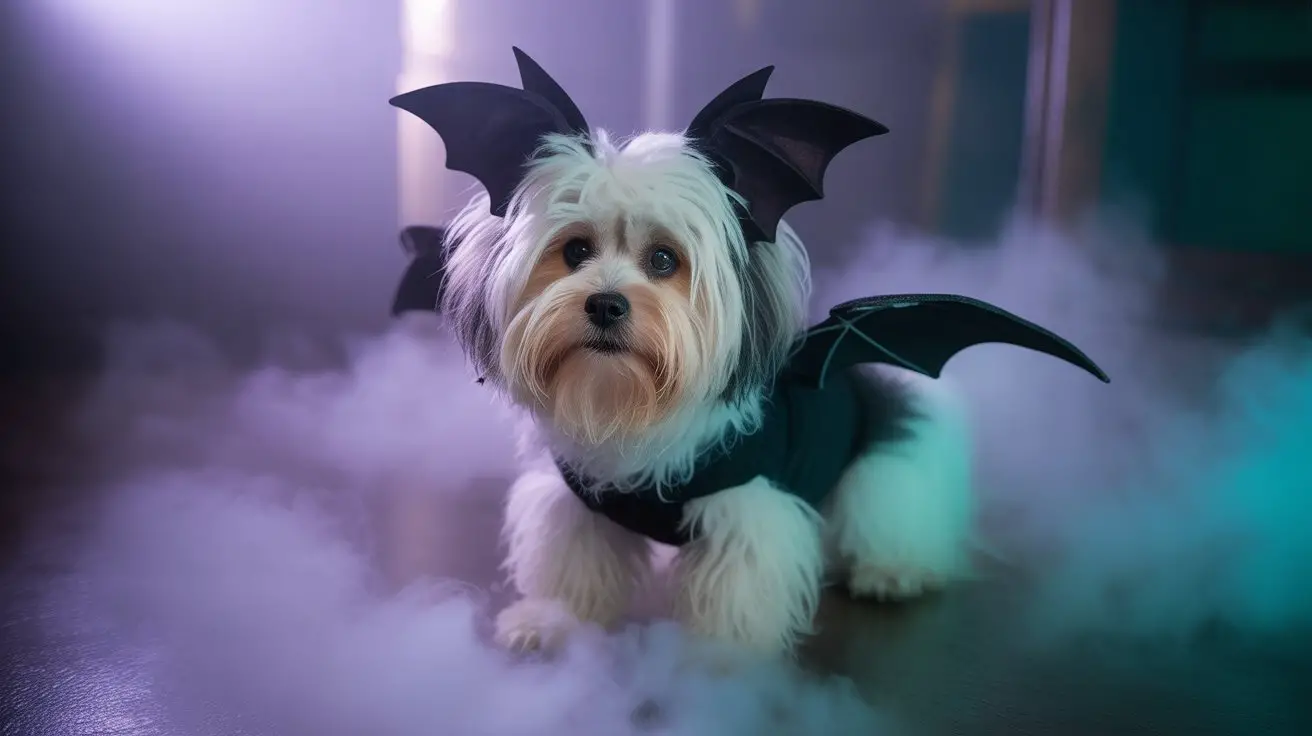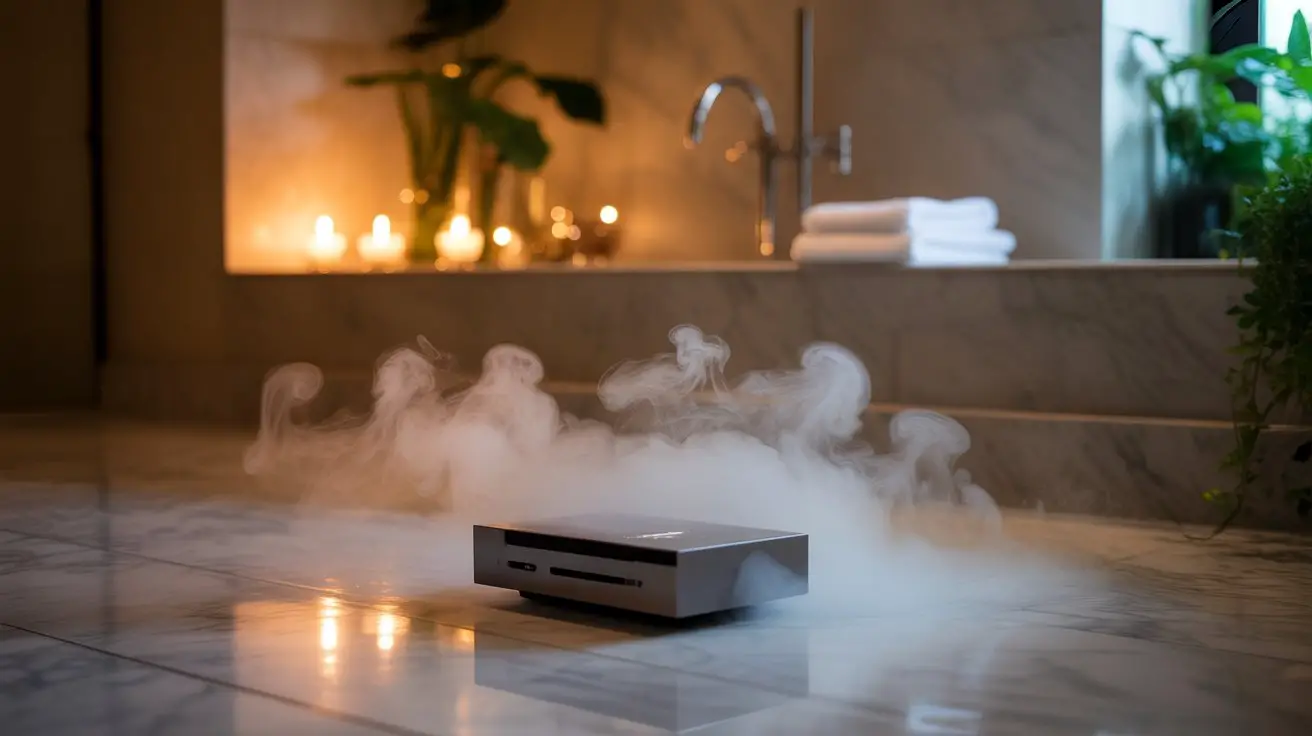You probably don’t realize that bubble fog machines require two separate cleaning protocols since they operate dual fluid systems that can cross-contaminate if not properly maintained. The fog generator’s heating element operates at temperatures exceeding 400°F, while the bubble solution system uses glycerin-based compounds that create residue buildup in different components. Without following manufacturer-specific disassembly procedures, you’ll risk damaging sensitive internal mechanisms that control the precise fluid ratios essential for peak performance.
Safety Precautions Before Cleaning Your Machine
Before you begin any cleaning procedure, make sure your bubble fog machine is completely powered down and unplugged from its electrical source.
Allow the unit to cool for at least 30 minutes after operation, as internal components retain heat that can cause burns.
Empty all fluid reservoirs completely—both fog fluid and bubble solution—to prevent chemical mixing during cleaning.
Wear nitrile gloves to protect your hands from cleaning solvents and residual chemicals.
Maintain adequate ventilation in your work area, as cleaning agents can produce harmful vapors.
Remove any detachable components like fluid tanks, nozzles, and bubble wands before cleaning.
Keep your workspace dry to prevent electrical hazards when reassembling.
Document fluid levels and machine settings before disassembly for proper reassembly reference. Regular maintenance enhances the longevity of the fog machine.
Gathering the Right Cleaning Supplies and Tools
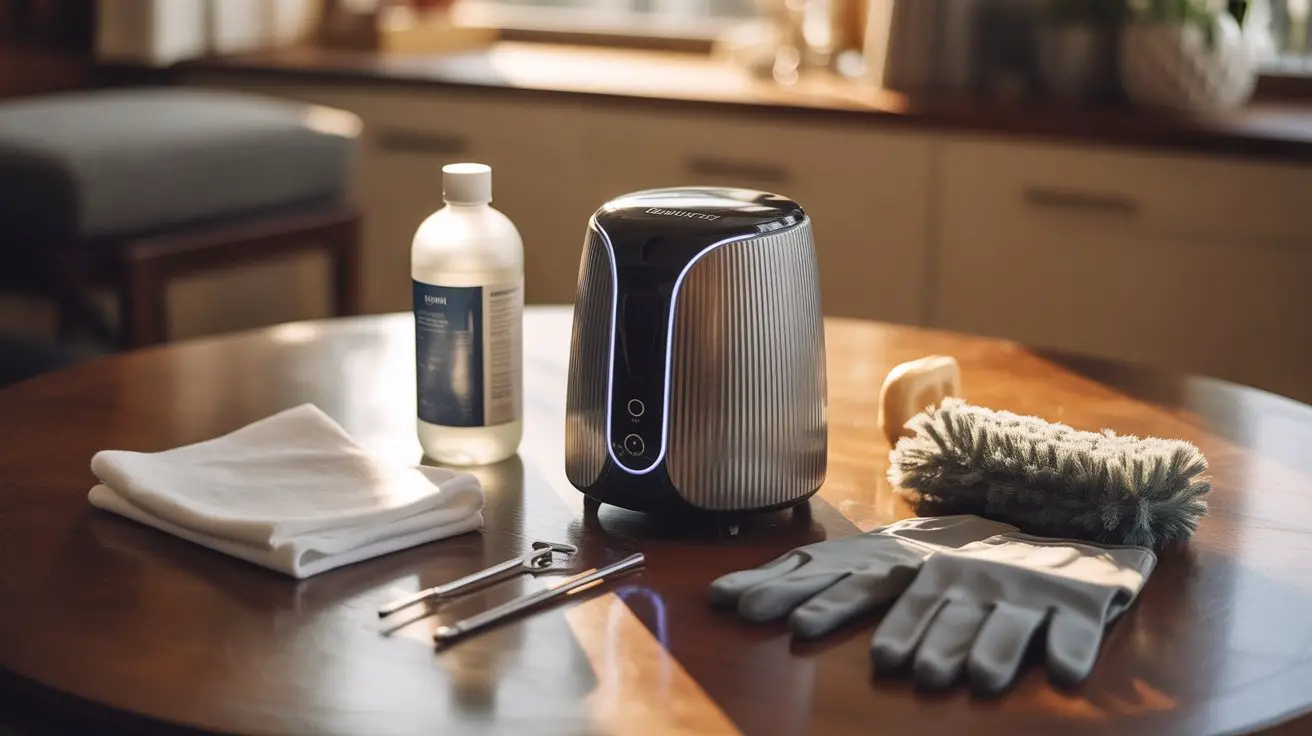
Once you’ve secured your workspace, you’ll need specific cleaning supplies designed for fog machine maintenance to avoid damaging sensitive internal components. Using incorrect cleaning agents can corrode seals, damage heating elements, or leave residues that affect performance. Essential cleaning supplies include:
- Distilled water for flushing fluid lines and removing mineral deposits
- Isopropyl alcohol (70% concentration) for disinfecting and degreasing components
- Cotton swabs for precision cleaning of tight spaces and electrical contacts
- Microfiber cloths that won’t scratch surfaces or leave lint residue
- Compressed air canister for clearing dust from vents and internal mechanisms
You’ll also need basic tools: a small Phillips head screwdriver for panel removal and needle-nose pliers for accessing confined areas. These supplies guarantee thorough cleaning without compromising your machine’s integrity. Regular cleaning can help prevent clogging of fluid heating chamber, which can lead to overheating and malfunction.
Disassembling Components for Thorough Access
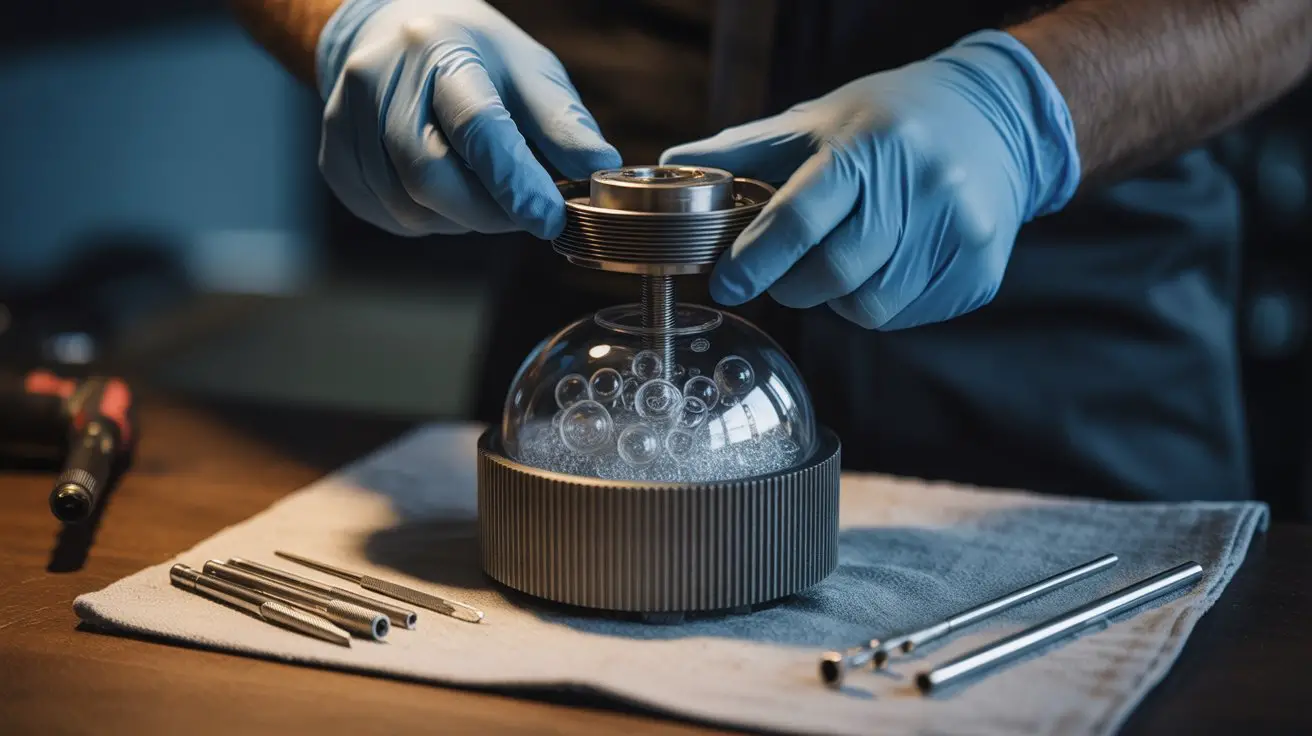
After verifying your bubble fog machine is completely powered down and cooled, you’ll need to systematically disassemble key components to access internal areas where residue accumulates.
Begin by removing the fluid reservoir and bubble solution tank, carefully noting their original positions. Detach the fan housing by unscrewing mounting bolts—typically four to six screws depending on your model.
Remove the heating element assembly if accessible, as fog residue commonly builds up around heat sources. Disconnect the bubble wand mechanism and air intake components.
Take photos during disassembly to verify proper reassembly sequence. Keep screws and small parts organized in labeled containers. Handle electronic connections gently, avoiding damage to wiring harnesses or sensor components.
Cleaning the Fog Fluid System and Heating Elements

Two critical systems require specialized cleaning techniques to restore your bubble fog machine’s ideal performance: the fog fluid circulation system and the heating element assembly.
These components accumulate residue that compromises fog output and can cause permanent damage if neglected.
Begin with the heating element, using distilled water mixed with white vinegar (1:1 ratio) to dissolve mineral deposits. Additionally, using water-based fog fluids can help minimize residue buildup in the future.
Avoid abrasive materials that’ll scratch the element’s surface.
Essential cleaning steps include:
- Flush fluid lines with distilled water to remove oil-based residue
- Inspect heating element for carbon buildup or corrosion
- Clean temperature sensors with isopropyl alcohol
- Replace worn seals and gaskets in the fluid system
- Test electrical connections for proper continuity
Always disconnect power before cleaning electrical components to prevent shock hazards.
Cleaning the Bubble Solution System and Nozzles
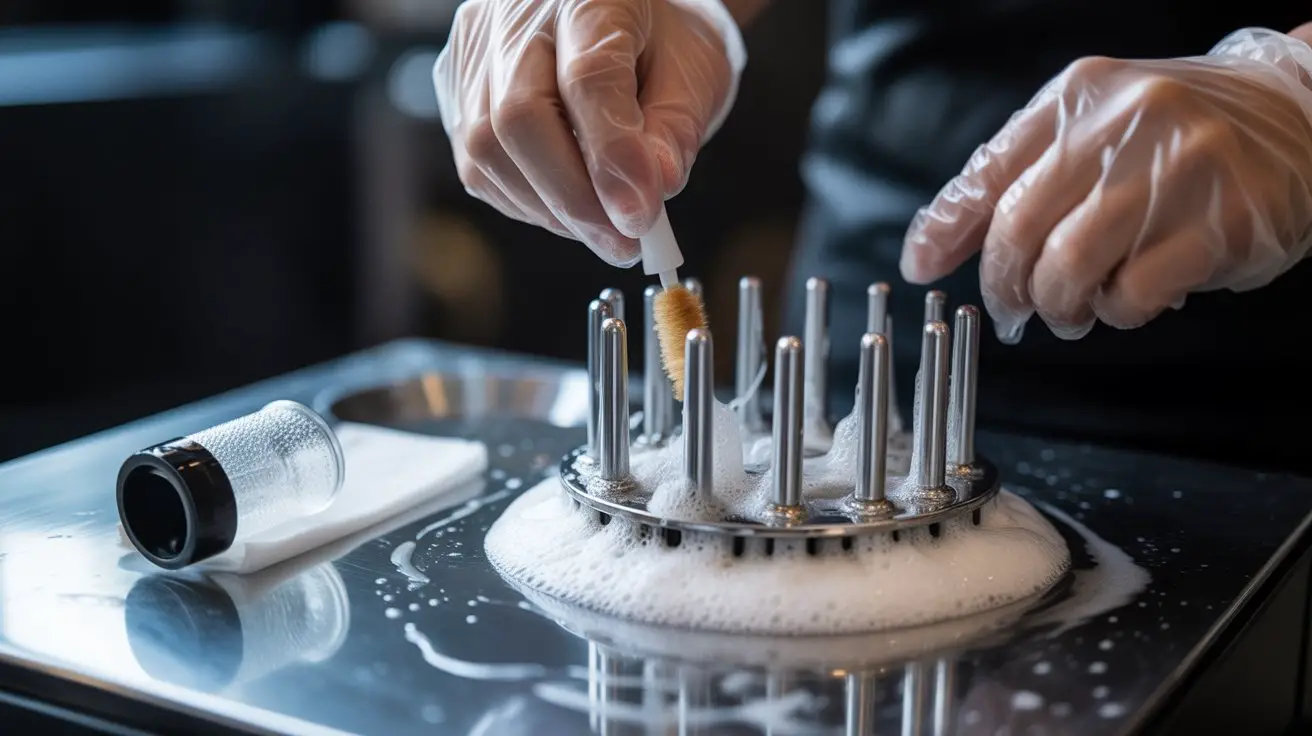
While fog fluid residues present one challenge, bubble solution deposits create entirely different maintenance demands that require targeted cleaning protocols. You’ll need to address soap film buildup, sugar residues, and glycerin accumulations that can clog bubble nozzles and compromise bubble formation quality.
| Component | Cleaning Agent | Procedure |
|---|---|---|
| Bubble reservoir | Warm distilled water | Drain, rinse thoroughly, dry completely |
| Feed lines | Isopropyl alcohol (70%) | Flush with alcohol, follow with water rinse |
| Bubble rings | Soft brush + mild detergent | Scrub gently, rinse with distilled water |
| Air chambers | Compressed air | Blow out residual moisture and particles |
| Nozzle arrays | Fine needle tool | Clear individual holes, avoid damage |
Always disconnect power before cleaning bubble systems to prevent accidental activation during maintenance procedures.
Reassembly and Testing After Maintenance

Proper reassembly requires systematic attention to component alignment and secure connections to restore your bubble fog machine’s peak performance.
Follow the reverse order of disassembly, guaranteeing each component seats correctly before tightening fasteners.
- Bubble wand assembly – Align mounting brackets and verify rotation clearance before securing bolts
- Nozzle connections – Hand-tighten fittings first, then use appropriate tools to prevent over-torquing
- Electrical connections – Match wire colors precisely and guarantee weatherproof sealing on outdoor units
- Reservoir mounting – Check gasket placement and fill level indicators for proper positioning
- Housing panels – Verify all access ports close flush without forcing latches
After reassembly, run a 15-minute test cycle with distilled water only. Additionally, ensure that the cleaning process includes using high-quality fog juice to maintain optimal performance.
Monitor for leaks, unusual sounds, or irregular bubble production patterns before adding commercial solution.
Frequently Asked Questions
How Often Should I Clean My Bubble Fog Machine?
You should clean your bubble fog machine after every 10-15 hours of operation or weekly with regular use. Don’t wait longer than monthly, as residue buildup damages internal components and reduces performance.
Can I Use Homemade Cleaning Solutions Instead of Commercial Ones?
You can use homemade solutions like diluted white vinegar or mild dish soap mixtures, but they’re less effective than commercial cleaners designed for fog machines’ specific internal components and residue types.
What Should I Do if My Machine Won’t Turn on After Cleaning?
First, make certain you’ve completely dried all internal components before reconnecting power. Check that you’ve properly reassembled all connections and seals. If it still won’t start, moisture likely remains inside—wait longer before attempting operation.
Is It Normal for My Machine to Smell Different After Cleaning?
Yes, you’ll notice different odors after cleaning your bubble fog machine. Residual cleaning solution, evaporating moisture, and removed buildup create temporary smells. Make certain you’ve thoroughly rinsed all components and allow complete drying before operation.
How Long Should I Wait Before Using the Machine After Cleaning?
While you might think it’s ready immediately, you must wait 24 hours minimum after cleaning your bubble fog machine. This guarantees complete moisture evaporation from internal components, preventing electrical damage and maintaining peak performance specifications.
Conclusion
You’ve methodically dismantled, cleansed, and rebuilt your machine with surgical precision—each component now gleaming like polished chrome. The acrid scent of old fluid has vanished, replaced by the sterile cleanness of distilled water and alcohol. As you power up for that critical test cycle, you’ll witness pristine bubbles dancing through crystal-clear fog streams. Your disciplined maintenance protocol guarantees peak performance while safeguarding both equipment longevity and operational safety standards.

